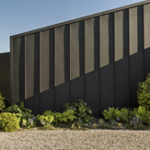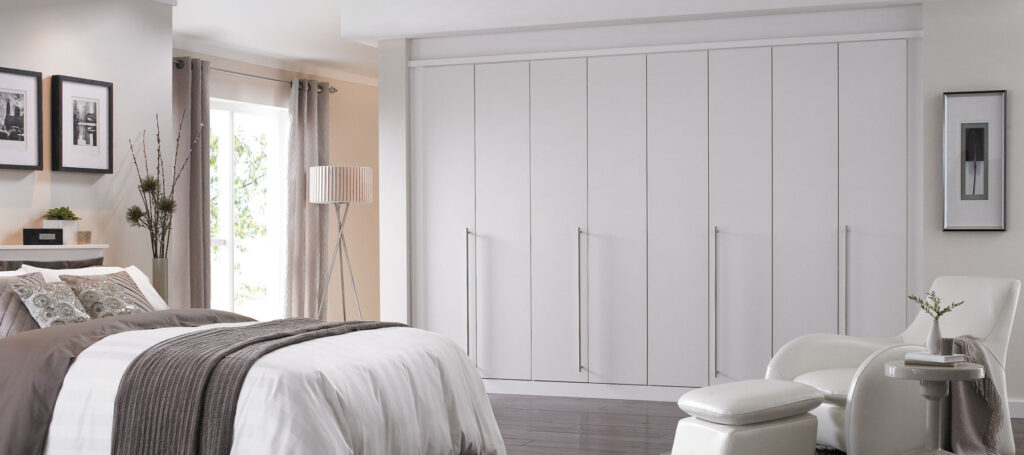A fitted wardrobe is more than just a place to store clothes. When designed well, it becomes a seamless part of your bedroom, reflecting your habits, taste, and daily routine. Unlike off-the-shelf furniture, a fitted wardrobe is tailored to your space and lifestyle, offering better organisation, smarter use of space, and a cleaner finish.
A good design starts with understanding your storage needs. Do you need more room for hanging clothes, shelves for shoes, or drawers for accessories? Every element should be purposeful, with convenience and style working hand in hand.
When working on fitted wardrobes in Poole, local designers often focus on balancing aesthetics with daily functionality, creating bespoke storage for individual lifestyles. By looking at how you use your space, they ensure every inch of your wardrobe serves a purpose, whether you’re dressing for work, managing kids’ clothing, or storing seasonal items.
Here’s how to design a fitted wardrobe that truly works for you.
Start with Your Daily Routine
Think about how you use your wardrobe from morning to night. What items do you reach for first? Which pieces need to be most accessible? Designing around your habits helps you avoid clutter and wasted space.
For example, keep everyday essentials like work clothes or gym wear at eye level. Place occasional items like formalwear or holiday gear higher up or to the side. This approach ensures your wardrobe supports your day, not the other way around.
Maximise the Layout for Your Space
The right layout makes all the difference, especially in smaller or awkwardly shaped rooms. Whether you’re working with a sloped ceiling, alcove, or wide wall, your fitted wardrobe should make full use of every available area.
Floor-to-Ceiling Storage
Go all the way up. Use high shelving for items you don’t need often, like winter bedding or luggage. This maximises vertical space while keeping the area below clear and functional.
Corner and L-Shaped Designs
In rooms where wall space is limited, corner wardrobes or L-shaped units are great options. These designs tuck into unused areas and offer deep storage without overwhelming the room.
Sliding vs Hinged Doors
If space is tight, sliding doors are ideal because they don’t need clearance to open. Hinged doors, on the other hand, allow full access to the wardrobe and work well in larger bedrooms. Choose what suits your layout and movement best.
Plan the Inside First
It’s easy to get distracted by colours and finishes, but start with the interior. Your layout should suit what you actually own, not just look good on paper.
Hanging Space
If you have lots of suits, shirts, or dresses, hanging rails are essential. Double rails can fit shorter items one above the other, while long sections are great for coats or gowns.
Shelving and Drawers
Shelves are perfect for folded jumpers, bags, and boxes. Soft-close drawers keep smaller items like socks, underwear, and jewellery organised and out of sight.
Pull-Out Solutions
Pull-out trays, shoe racks, and trouser hangers are smart additions that improve usability. They’re easy to access and help you avoid digging through piles of clothing.
Include Lighting That Works for You
Lighting makes a big difference. Without it, your wardrobe becomes a dark corner where things go to get lost. LED strips or spotlights inside the wardrobe let you see everything clearly.
Motion sensor lights are a popular choice, they switch on automatically when you open the doors. This is especially helpful in early mornings or late nights when you don’t want to light up the entire room.
Use Mirrors to Open Up the Space
Mirrored doors save you from buying a separate full-length mirror and help the room feel bigger. They reflect light and make narrow or small bedrooms look more open.
You can go for full mirrored panels or incorporate smaller mirror sections, depending on your style. Either way, they add a practical touch without sacrificing design.
Match the Exterior to Your Style
Once the layout is sorted, focus on the finish. The exterior of your wardrobe should complement your room’s decor, not clash with it.
Minimal and Modern
Go for clean lines, handleless doors, and neutral tones for a sleek, contemporary look. Glossy white or matte grey finishes work well in modern interiors.
Classic and Warm
Choose panelled doors, woodgrain textures, or subtle colours like cream, walnut, or soft oak for a timeless, traditional feel. Add classic handles or brushed metal accents to complete the look.
Add Smart Storage Features
Small touches can make a big difference in usability. Consider adding features like:
-
Built-in laundry baskets to keep clothes off the floor
-
Tie, belt, or scarf racks to keep accessories organised
-
Velvet-lined jewellery drawers for added luxury
-
Adjustable shelves to adapt as your needs change
These additions don’t just help with storage, they also improve the overall experience of using your wardrobe.
Consider the Future
Think ahead when designing your wardrobe. Your lifestyle might change, and your wardrobe should be flexible enough to grow with you.
Make sure shelves can be moved, rails can be adjusted, and the structure allows for easy updates. Choosing quality materials and finishes will also help your wardrobe last for years without looking tired or worn.
Work with a Professional
Designing a fitted wardrobe is a big decision, and getting it right means paying attention to both the big picture and the little details. An experienced designer will help you avoid common mistakes, plan better layouts, and get the best value for your budget.
They’ll also ensure your fitted wardrobe is built to suit your room, your storage needs, and your personal style.
Final Thoughts
A fitted wardrobe should make your life easier, not more complicated. It should offer storage where you need it, reflect your taste, and feel like it’s always been part of the room.
By focusing on function first and tailoring the design to your daily habits, you can create a wardrobe that looks good, works hard, and adds lasting value to your home. Whether you’re furnishing a new bedroom or upgrading an old one, a fitted wardrobe that’s truly built for you makes all the difference.
- How to Design a Fitted Wardrobe That Works for You
- Learn how to design a fitted wardrobe that suits your lifestyle and space. From layout to finishes, discover tips for creating storage that works for you.
- Fitted Wardrobes
Related posts:
 Can Residential End of Lease Cleaning Help You Get Your Bond Back?
Can Residential End of Lease Cleaning Help You Get Your Bond Back?
 The Best Construction Company Christchurch To Manage Your Project
The Best Construction Company Christchurch To Manage Your Project
 Gutter Cleaning Mannerim – Essential Service for Property Protection
Gutter Cleaning Mannerim – Essential Service for Property Protection
 Gutter Cleaning Nunawading: Safeguard Your Home with Professional Maintenance
Gutter Cleaning Nunawading: Safeguard Your Home with Professional Maintenance
 Gutter Cleaning Kilsyth South – Reliable Maintenance for a Safer Home
Gutter Cleaning Kilsyth South – Reliable Maintenance for a Safer Home
 Questions to Ask Your Architect and Contractor Before the Work
Questions to Ask Your Architect and Contractor Before the Work
 How Cladding Can Improve the Thermal Efficiency of Bournemouth Homes
How Cladding Can Improve the Thermal Efficiency of Bournemouth Homes
 Flat Roof Repair in Cincinnati, OH: Everything You Need to Know
Flat Roof Repair in Cincinnati, OH: Everything You Need to Know







